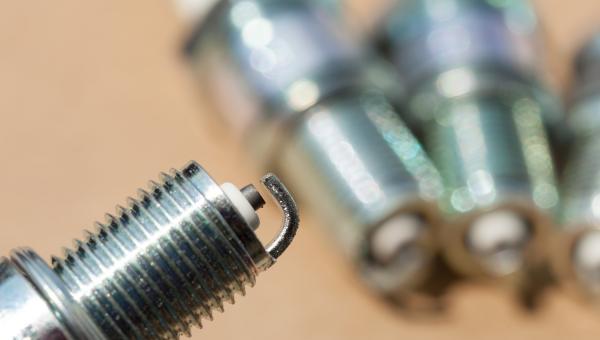Test Drive Notes Library
-
 Pros
Pros
- Looks. With everybody’s Aunt Mary now driving a rugged-looking crossover these days, Land Rover, the original go-anywhere vehicle, had to up the ante a bit. And so they have. The Defender looks like it’s designed to trek through the bush, like its Defender forebears. With its squared-off body, rugged tires, huge wheel openings, prominent spare tire hung on the back door, the Defender is three clicks tougher looking than anything in your neighbor’s driveway. That will be what sells this vehicle—not a test drive, but seeing one. Our Defender even came with a “side mounted gear carrier,” essentially a box built into the rearmost, right side window. That’ll be useful in suburbia. It won’t carry a full case of Cabernet, but you can probably fit six bottles in there.
- Luxury. OK, not quite luxury, but given the Defender’s appearance and bonafide off-road ability, it’s not here to make you rough it. The leather seats are heated, optionally cooled, and very comfortable. The interior is tasteful and fairly well appointed. In short, it comes with pretty much all of today’s luxury car features, and does its level best to minimize the fact that you’re driving a truck. We mostly liked the basic controls. While not the clearest on first glance, once we figured out what was what, things operated well, and the most common controls have hard knobs and switches. Notably, the video rear view mirror was a godsend on the Defender, allowing you to see clearly behind, as if right through the rear headrests and spare tire covering much of the rear window.
- Off-road ability. The Defender is no poser. While you may not want to take your $72,000 luxury truck ($62,250 plus options for the four-door 110 SE) bouncing over boulders, Land Rover says you can. Out of curiosity, we found a state park that has a “4X4 Playground” and gave the Defender a go on the “Frame Twister.” Hm. Still seemed to drive straight after that. We took it through deep puddles of mud. Only when the “high water level” warning came on did we sheepishly back out, preferring caution to valor along with a $15,000 bill for new engine. Finally, we took it up a steep, rocky, muddy hill, and with only some minor complaints, it made it to the top. There are lots of electronic helpers and settings for various terrain that raise and lower the body, lock and unlock differentials, and control your speed for you. It’s like the Canon Sure Shot of SUVs. And speaking of cameras, there are more of them on the Defender than on the US Embassy in Kabul. Having put it through its off-road paces, we can confidently say this: At minimum, the Defender will keep you from getting stuck in a snow bank on your way back from your ski house.
- Drivetrain. There are two powertrains. We drove the optional 6-cylinder, 395 hp engine with a (very) mild hybrid system. A four cylinder turbo is standard. The six has more than enough power to make the two-and-a-half-ton Defender feel quick. Passing was a piece of cake on the highway. And the transmission was smooth and unnoticeable. Mileage? Not so great. We got 17 combined. The EPA pegs it at 19, but they didn’t try the Frame Twister.
- Comfortable highway ride. In general, the ride is on the firm side, but it was smooth cruising on the highway. It’s a heavy vehicle, but you don’t notice it with the six cylinder engine.
- Standard safety. All the good stuff comes standard on the Defender. Adaptive cruise control is a $1,000 option.
- Tons of headroom.Ignoring aerodynamics has its benefits. The squared off shape leaves lot of room for hats and updos. This should be the official vehicle of the NBA.
- Looks. Did we mention looks? Your neighbor, Fred, is going to hate his Toyota Highlander after seeing you in your Defender.
-
 Cons
Cons
- Truck roots. Despite its many luxury touches, the Defender regularly reminds you that it’s a truck. It’s hard to avoid that, given the off-road capabilities Land Rover felt were needed to keep faith with the nameplate. But the ride would occasionally send a smack through the cabin, and there was enough body lean on sharper curves to remind you you’re in a top heavy rig.
- Tall. Another truck feature. Climb up, partner. Getting in the Defender requires a “one, two, threeeeee” and a pull on the grab handle. Even with the automatic ride height set to lower the body two inches, we still found it required effort. If you have to drive your elderly Mom around, this is not the ride for you.
- Wind noise. While the interior is reasonably quiet overall, the squared-off Defender produced a lot of wind noise right around the driver during highway driving.
- Infotainment issues. We found the infotainment system slow and even faulty at times. The navigation system completely froze up on us during a trip, and became useless. We were able to use Google Maps on our phone, thanks to Apple Car Play. But that seems like a bad omen for a company that has been electronically challenged in the past.
- Reliability. Speaking of which… Land Rover does not have a pristine reliability record. While we never know how a new vehicle will perform, buyers are urged to go in with both eyes open (and either a 36 month lease or an extended warranty). Curiously, back in the day, the Defender was known as THE durable vehicle for backwoods travel. It’s hard to imagine confidently taking the current Defender, with all of its elaborate electronics, on that kind of trek today. Then again, that’s not why people will be this Defender. They’ll buy it for the looks.
Test Drive Notes Library
Get the Car Talk Newsletter
 Pros
Pros Cons
Cons


